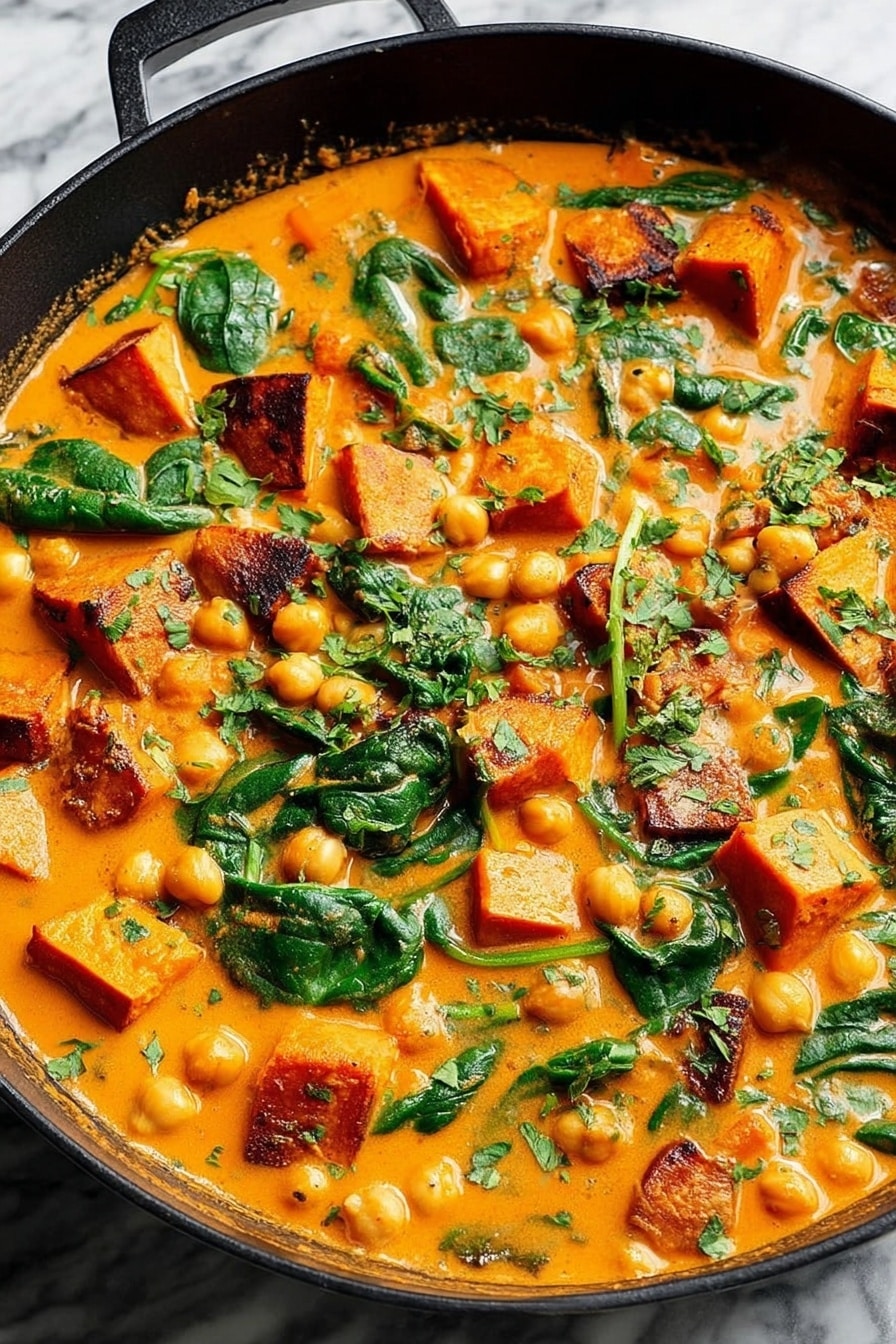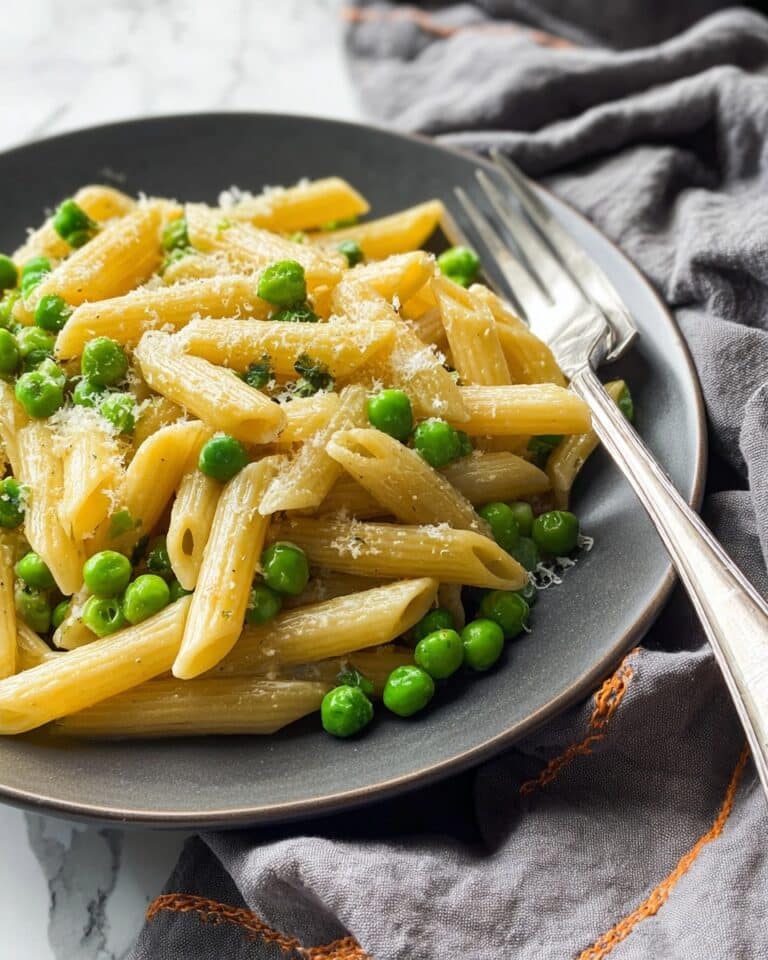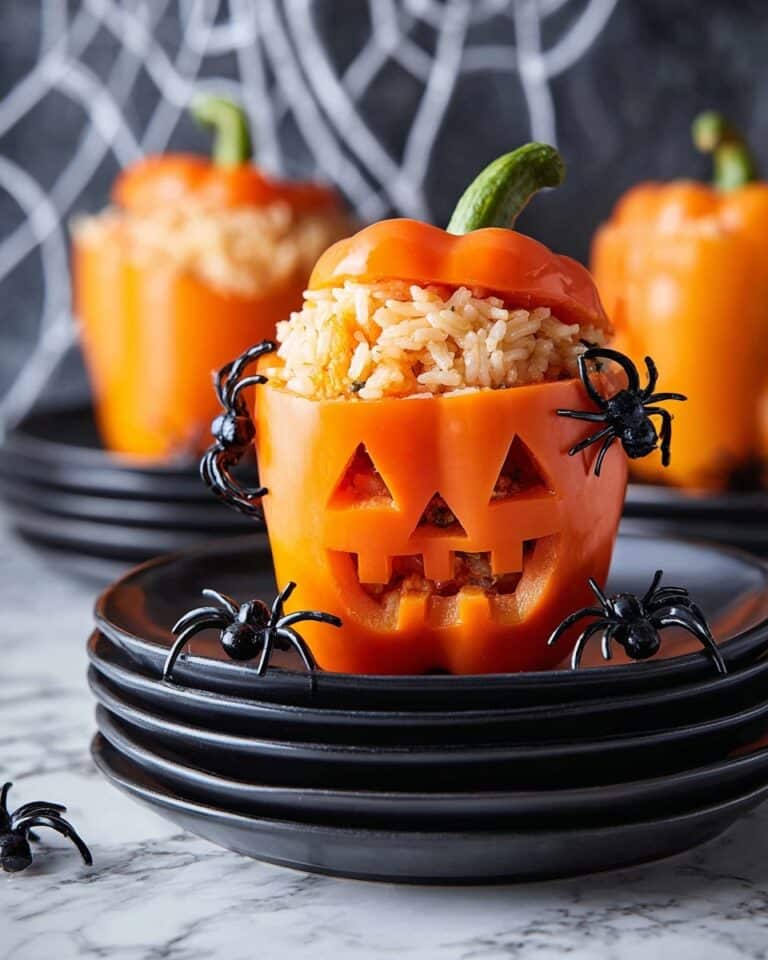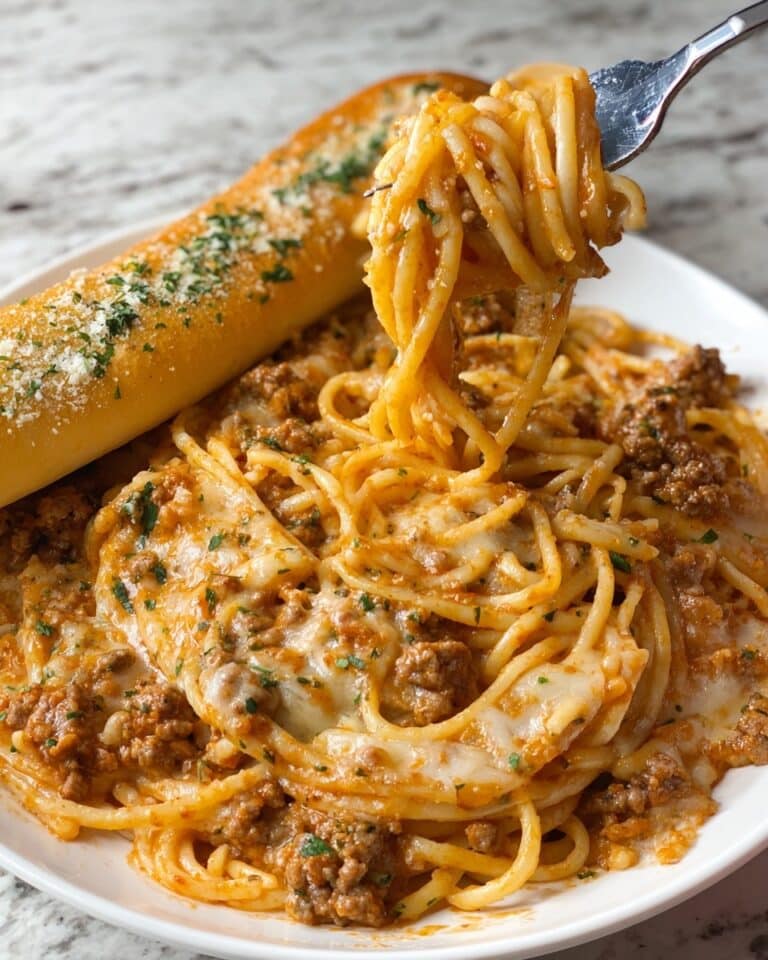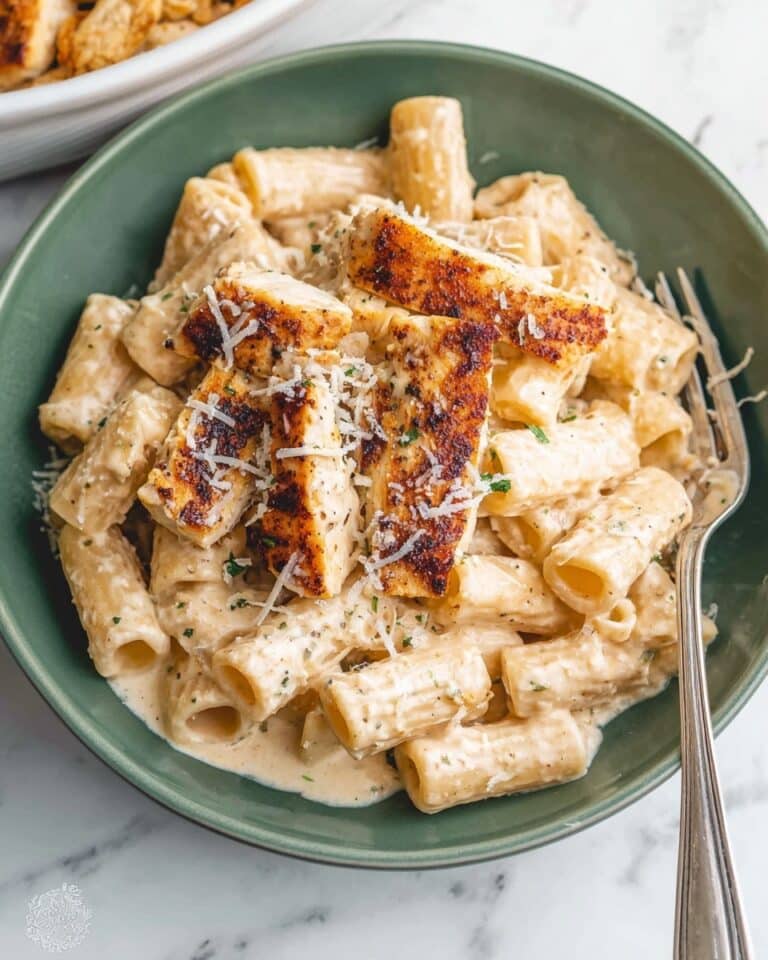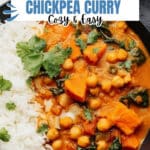Butternut Squash Curry with Chickpeas Recipe
If you’re craving a cozy, wholesome dish that bursts with flavor and warmth, you’re going to love this Butternut Squash Curry with Chickpeas Recipe. It’s the kind of meal that wraps you in comfort while being packed with nutritious ingredients, perfect for those days when you want something hearty but also plant-based and vibrant. Trust me, once you make this, it’ll become a go-to, especially as the cooler weather creeps in. Let me walk you through everything you need to know to nail it every time.
Why This Recipe Works
- Balanced Flavors: Roasted butternut squash adds sweetness that pairs perfectly with the spicy red curry paste and tangy lime juice.
- Heartiness & Nutrition: Chickpeas add satisfying protein, making this curry a wholesome, filling meal without any meat.
- Creamy Texture: Full-fat coconut milk lends a luscious creaminess that brings everything beautifully together.
- Simple Techniques: A few straightforward cooking steps mean you’ll have this on your table in about an hour, perfect for busy weeknights.
Ingredients & Why They Work
The magic of this Butternut Squash Curry with Chickpeas Recipe lies in its simple, fresh ingredients that pack big flavor when combined. Each plays a role in creating layers of taste and texture—plus, it’s easy to find everything at your local store.

- Butternut Squash: When roasted, it caramelizes, developing a sweet depth that complements the spicy curry perfectly.
- Olive Oil: Adds richness and helps soften the onions and spices, creating a flavorful base.
- Sweet Onion: Adds natural sweetness, balancing the heat and acidity.
- Garlic and Fresh Ginger: These aromatics are essential for that unmistakable curry flavor and warmth.
- Red Curry Paste: The star spice blend that gives this curry its vibrant color and bold taste.
- Turmeric: Adds earthiness and that beautiful golden hue.
- Full-fat Coconut Milk: Provides creaminess and sweetness to mellow the spices and create a luxurious sauce.
- Vegetable Broth: Lightens the richness and helps cook the chickpeas and greens gently.
- Chickpeas: Packed with protein and fiber, they make this curry satisfyingly filling.
- Baby Spinach or Kale: Adds vibrant color and nutrition, wilting perfectly into the curry at the end.
- Soy Sauce or Tamari: Brings umami and enhances all the other flavors.
- Granulated Sugar or Maple Syrup: Just a touch to balance acidity and spice.
- Fresh Lime Juice: Brightens everything up with a fresh, tangy kick.
- Salt and Pepper: To taste, because seasoning is key!
Tweak to Your Taste
I’ve played around with this Butternut Squash Curry with Chickpeas Recipe quite a bit, and one of my favorite things is how easy it is to adapt. Whether you want it a bit spicier, milder, or packed with extra veggies, the buildable base is ready for you to make it your own.
- Spice it up: If you love heat, add some chopped fresh chili or a spoonful of extra curry paste—I do this when I want a little extra kick on chilly nights.
- Greens swap: Kale works just as well as spinach and adds a nice robust texture if you prefer something heartier.
- Protein variation: Instead of chickpeas, I’ve tried cubed tofu or even cauliflower florets—both soak up the curry beautifully.
- Sweetness adjustment: Maple syrup deepens the flavor nicely if you want to avoid refined sugar.
Step-by-Step: How I Make Butternut Squash Curry with Chickpeas Recipe
Step 1: Roast the Butternut Squash to Golden Perfection
After chopping the butternut squash into bite-sized pieces, I spread them out on a baking sheet lined with parchment for easy cleanup. Drizzle with olive oil, sprinkle a pinch of salt and pepper, and roast at 400°F (200°C) for 30 to 45 minutes. You’ll want to see some golden browning and soft, tender squash—that caramelization adds a ton of flavor. I usually toss halfway through for even cooking. Pro tip: If your pieces are uneven, some might cook faster, so cutting as evenly as possible helps.
Step 2: Sauté the Aromatics to Build Your Flavor Base
While the squash is roasting, heat olive oil in a large skillet over medium-high heat. Toss in the diced onion and cook until translucent but not browned, about 2-3 minutes. Then add the minced garlic and grated ginger, stirring frequently so they don’t burn—around 2 minutes until fragrant. This stage smells incredible and really sets the mood for your curry.
Step 3: Bring the Curry Paste, Spices, and Liquids Together
Mix in the red curry paste and turmeric until the onions and aromatics are well coated. Pour in the coconut milk and vegetable broth, then add the rinsed chickpeas. Stir everything together and bring to a gentle boil. Then lower the heat to a simmer and cover—this gentle cooking lets the flavors meld while the squash finishes roasting.
Step 4: Finish the Curry with Flavors and Greens
Once the squash is tender and roasted, stir it into your curry along with the soy sauce, sugar (or maple syrup), and lime juice. I usually taste here and add salt and pepper as needed—you want that perfect balance of sweet, salty, and tangy. Lastly, stir in the baby spinach or kale and let it wilt for just a couple of minutes before removing the pan from heat.
Pro Tips for Making Butternut Squash Curry with Chickpeas Recipe
- Even chopping matters: Cut your squash into uniform pieces so they roast evenly and cook through at the same time.
- Fresh ginger wins: Using freshly grated ginger makes a big difference for the curry’s brightness and warmth—avoid powdered if you can.
- Don’t rush wilting greens: Adding the spinach or kale last and letting it gently wilt makes sure it stays vibrant and doesn’t get mushy.
- Taste as you go: Adjust the balance with lime, sugar, or soy sauce a little at a time to hit your perfect flavor note.
How to Serve Butternut Squash Curry with Chickpeas Recipe
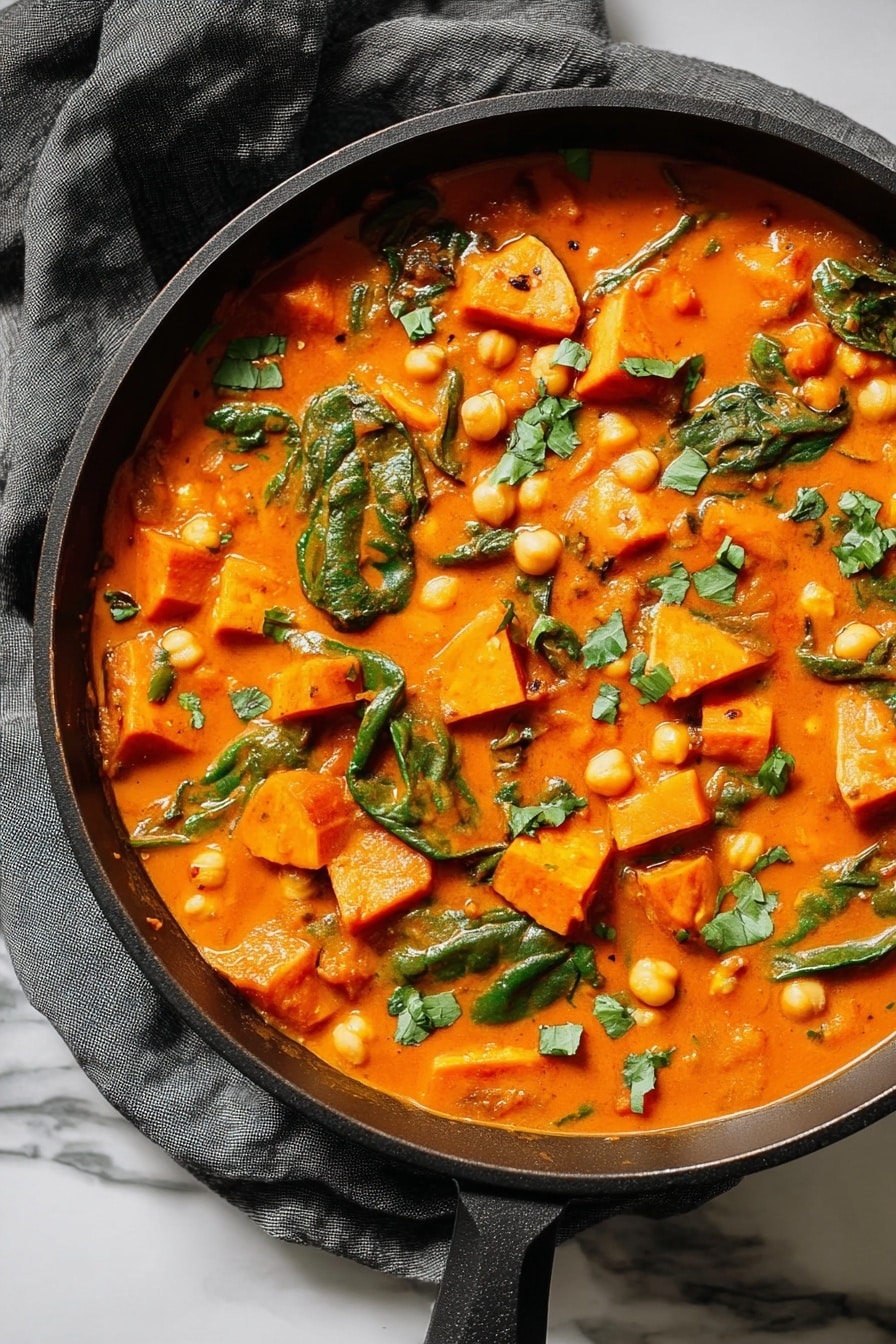
Garnishes
I like to finish this curry with fresh chopped cilantro or basil—that fresh herb aroma just lifts everything. A handful of chopped peanuts or cashews adds a wonderful crunch and nutty contrast. Don’t skip the lime wedges; squeezing fresh lime juice over your bowl brightens every bite. And if you like heat like me, a dash of your favorite hot sauce is an absolute game-changer.
Side Dishes
I usually serve this curry over a bed of fluffy jasmine rice or quinoa for some extra protein. Sometimes, I’ll add a side of warm naan bread if I’m feeling indulgent. A simple cucumber raita or cooling yogurt on the side balances the spices nicely too.
Creative Ways to Present
For a dinner party, I love serving the curry in individual coconut bowls or hollowed-out mini pumpkins—it’s festive and fun! Layering the rice first, then ladling the curry on top, and finishing with colorful garnishes makes the presentation pop every time. Plus, it’s a great conversation starter!
Make Ahead and Storage
Storing Leftovers
I store leftovers in an airtight container in the fridge and find that the curry actually tastes even better the next day—flavors get to deepen overnight. Just make sure to cool it completely before refrigerating to keep things fresh and safe.
Freezing
This curry freezes really well, making it a perfect batch-cooking recipe. I portion it into freezer-safe containers and it keeps for up to 3 months. When you’re ready, thaw overnight in the fridge and reheat gently on the stove to keep the texture intact.
Reheating
To reheat, I prefer warming the curry slowly on the stovetop with a splash of water or broth if it seems thick. This prevents the coconut milk from breaking and keeps the sauce silky and smooth. Heating it too quickly in the microwave can sometimes affect texture, so stovetop is my go-to.
FAQs
-
Can I use frozen butternut squash for this curry?
Absolutely! Frozen butternut squash works well, just adjust the roasting time since frozen squash tends to release more moisture and might roast faster. You can also skip roasting and add it straight to the curry, though roasting adds extra caramelized flavor.
-
What can I substitute for red curry paste?
If you can’t find red curry paste, you can use 1 tablespoon of curry powder along with a pinch of ground cumin and garam masala. It won’t be quite the same but will still deliver tasty curry vibes.
-
Is this curry vegan and gluten-free?
Yes! This recipe is naturally vegan and gluten-free, especially if you use tamari instead of soy sauce. It’s a great plant-based comfort food option.
-
Can I add other vegetables to this curry?
For sure! Vegetables like bell peppers, green beans, or zucchini all make delicious additions. Just add veggies that cook quickly toward the end of simmering so they maintain a bit of texture.
-
How spicy is this curry?
The spice level is moderate thanks to the red curry paste. If you prefer milder curry, start with less paste and add more gradually to taste. For more heat, add chili flakes or fresh chilies as you cook or when serving.
Final Thoughts
This Butternut Squash Curry with Chickpeas Recipe has become such a favorite in my kitchen because it’s comforting, colorful, and endlessly forgiving—whether you’re a beginner or a seasoned cook. It’s one of those dishes that feels like a warm hug on a plate. So go ahead, dive in, try it yourself, and don’t hesitate to make it your own. I promise, it’ll brighten up your dinner table and probably you’ll be making it again and again like I do.
Print
Butternut Squash Curry with Chickpeas Recipe
- Prep Time: 15 minutes
- Cook Time: 50 minutes
- Total Time: 1 hour 5 minutes
- Yield: 6 servings
- Category: Main Course
- Method: Stovetop
- Cuisine: Thai
- Diet: Vegetarian
Description
A flavorful and creamy Butternut Squash Curry with Chickpeas, packed with warm spices, spinach, and a rich coconut milk base. Perfectly paired with rice or quinoa for a wholesome vegetarian meal.
Ingredients
Butternut Squash Curry
- 4 cups chopped butternut squash (1 small or 1/2 large)
- 4 tablespoons olive oil, divided
- 1 medium sweet onion, diced
- 3 cloves garlic, minced
- 1 tablespoon grated fresh ginger
- 2 1/2 tablespoons red curry paste
- 1/2 teaspoon turmeric
- 13.5 ounce can full-fat coconut milk
- 1/2 cup vegetable broth
- 15 ounce can chickpeas, drained and rinsed
- 2 cups baby spinach or chopped kale
- 1 tablespoon low sodium soy sauce or tamari for gluten free
- 1 tablespoon granulated sugar or maple syrup
- 1 tablespoon fresh lime juice
- Salt and pepper, to taste
For Serving
- 4 cups cooked rice or quinoa
- Chopped cilantro or basil
- Additional lime wedges
- Chopped peanuts or cashews
- Hot sauce
Instructions
- Roast the squash: Preheat the oven to 400 degrees F and grease a large baking sheet with olive oil or line it with parchment paper. Add the chopped butternut squash, drizzle with a few tablespoons of olive oil, sprinkle with salt and pepper, then bake for 45 minutes until golden and browned in spots.
- Sauté aromatics: While the squash roasts, heat 2 tablespoons of olive oil in a large skillet over medium-high heat. Add the diced onion and sauté for 3 minutes until translucent.
- Add garlic and ginger: Add the minced garlic and grated ginger to the skillet, cooking and stirring frequently for about 2 minutes until fragrant.
- Add spices and liquids: Stir in the red curry paste and turmeric. Pour in the coconut milk, vegetable broth, and chickpeas, stirring to combine well.
- Simmer curry: Bring the mixture to a boil, then reduce the heat to maintain a gentle simmer. Cover and let it simmer for 15 minutes, allowing flavors to meld and continuing the squash roasting in the oven.
- Finish the curry: Stir in the soy sauce, sugar, fresh lime juice, salt, and pepper to taste. Add the roasted butternut squash and baby spinach, stirring until the spinach wilts, about 1-2 minutes. Remove from heat.
- Serve: Serve the curry hot over cooked rice or quinoa. Garnish with chopped cilantro or basil, lime wedges, chopped peanuts or cashews, and hot sauce as desired. Enjoy!
Notes
- Nutritional estimates do not include rice or additional toppings.
- You can substitute sweet potato for the butternut squash for a variation in flavor and texture.
- If red curry paste is unavailable, 1 tablespoon curry powder with ground cumin and garam masala can be used, though the flavor will differ.
- Chickpeas can be omitted or replaced with cauliflower or tofu for different protein options.
Nutrition
- Serving Size: 1 cup
- Calories: 320 kcal
- Sugar: 6 g
- Sodium: 400 mg
- Fat: 22 g
- Saturated Fat: 18 g
- Unsaturated Fat: 4 g
- Trans Fat: 0 g
- Carbohydrates: 28 g
- Fiber: 6 g
- Protein: 7 g
- Cholesterol: 0 mg

